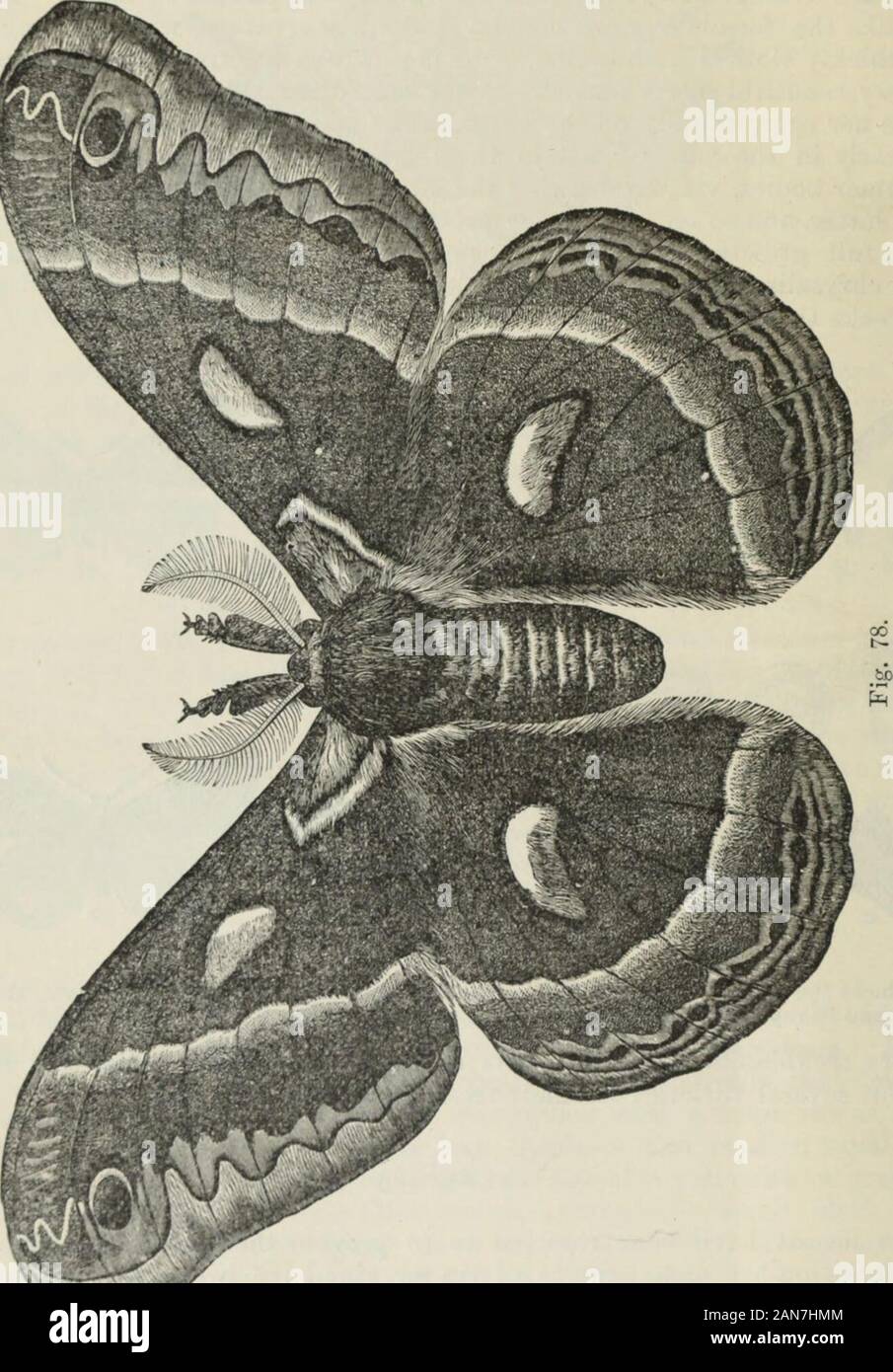Report of the Commissioners . tree,about three inches wide and sloping downwards, like an inverted funnel, so that the insectcould not surmount them, also bandages of cotton and other fabrics, daubed with tar,have been used with the same end in view, and by these means the trees have, in manyinstances, been saved from serious damage. I have not had much opportunity of judgingwhether the English sparrow has had any efiect in reducing the number of these insects,but I am of opinion that it has not. THE CECROPIA EMPEROR CATERPILLAR. The Cecropia emperor caterpillar, Saiiiia cecropia, the largest

Image details
Contributor:
The Reading Room / Alamy Stock PhotoImage ID:
2AN7HMMFile size:
7.1 MB (381.4 KB Compressed download)Releases:
Model - no | Property - noDo I need a release?Dimensions:
1319 x 1894 px | 22.3 x 32.1 cm | 8.8 x 12.6 inches | 150dpiMore information:
This image is a public domain image, which means either that copyright has expired in the image or the copyright holder has waived their copyright. Alamy charges you a fee for access to the high resolution copy of the image.
This image could have imperfections as it’s either historical or reportage.
Report of the Commissioners . tree, about three inches wide and sloping downwards, like an inverted funnel, so that the insectcould not surmount them, also bandages of cotton and other fabrics, daubed with tar, have been used with the same end in view, and by these means the trees have, in manyinstances, been saved from serious damage. I have not had much opportunity of judgingwhether the English sparrow has had any efiect in reducing the number of these insects, but I am of opinion that it has not. THE CECROPIA EMPEROR CATERPILLAR. The Cecropia emperor caterpillar, Saiiiia cecropia, the largest and one of the mosthandsome moths we have, also feeds upon the leaves of the apple tree. It is a very beauti- {Mr. W. Saunders.] 70 INSECTS AND INSECTIVOROUS BIRDS. ful creature, and measures, when its wings are opened, from five to seven inches across, hasbrown and yellowish markings, witli prominent kidnoy-sliaped spots on the wings. Themoth (see Fig. 78) appears during the month of June, and deposits her eggs singly on the. • : Mi£^ apple-trees. Thes**, during the next five or six weeks, hatch into cat(!rj)illars, which finallygrow to be three or four inches long, and about as thick as a mans finger or a littlethicker. They are green in colour, and are coVered with warts ; thos(^ on the top of theanterior segments are h>rge, and of a coral red colour, the remaindci- are yellow, exceptingthose on the second and hinch^r segments, which, in common with tin; smaller ones alongthe sides, are >»lue {see Fig. 70). Early in the autumn the larva spins its strong silkencocoon, perhaps three inches in length, inside of which it changes to a chrysalis and re- ^Afr. W. Saunders.^ i INSECTS AND INSECTIVOROUS BIRDS. 71